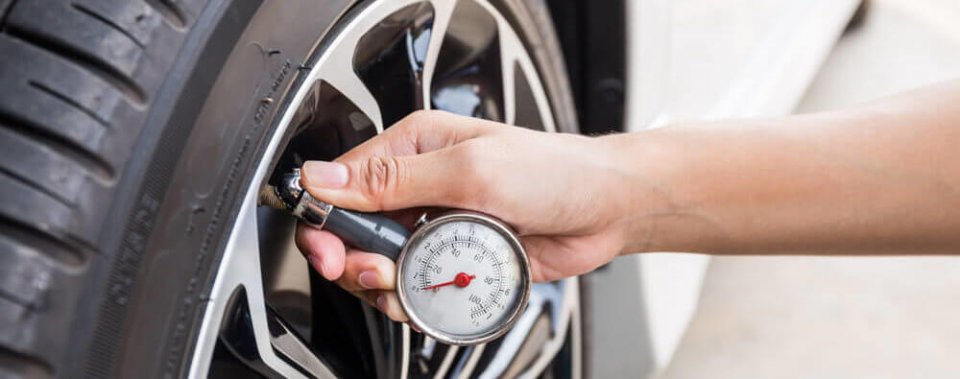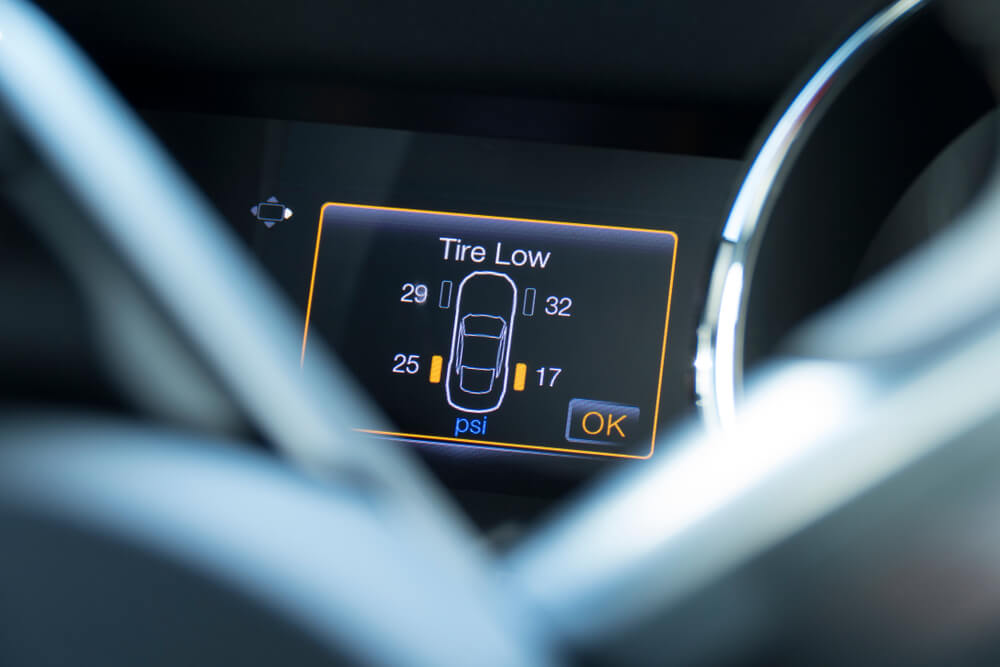
If your vehicle’s tires aren’t properly inflated, you’ll experience a wealth of problems. Driving on underinflated tires reduces fuel economy, impacts handling, and could cause a blowout, resulting in an accident. Driving on overinflated tires could lead to instability while on the road. Also, your tires will wear down much faster if they’re overinflated.
While you might think that your vehicle’s tire pressure monitoring system will ensure that your tires are properly inflated, that’s not the case. The system will warn you if you have an active leak, but it won’t ensure that your tires have the right amount of air. Instead, it would be best to use a tire pressure gauge once a month or more, depending on the season.
Tire Pressure in Winter – What You Need to Know
You will need to use your tire pressure gauge more often in the winter. It’s wise to check your tires at least twice a month during this season, as the cold weather causes tire pressure to drop dramatically. You can expect your tires to lose 1-2 pounds of pressure for every 10-degree temperature drop. That’s significant enough to put you at risk when you’re on the road.
Tire Pressure in Summer – What You Need to Know
Your tire pressure gauge will also come in handy during the summer months. Hot temperatures cause the air inside of your tires to expand. For every 10 degrees the temperature increases, you can expect your tires to gain a pound of pressure. Failing to address the problem could put you in danger when you’re on the road. It’ll be challenging to handle your vehicle, and the tires will experience more significant wear and tear. Check the tire pressure at least twice a month in the summer to stay safe on the road.

How to Use a Tire Pressure Gauge
Checking your tire pressure is a breeze. First, you should only check your tire pressure when the tires are cold. That means your car should be parked for at least three hours. Then find out what your tire pressure should be. Only 25 percent of drivers use the correct method to determine tire pressure. Some people look at a tire pressure chart or eyeball the tires and guess what the pressure should be. Others look at the tire pressure guide on the tires, but you can overinflate your vehicle if you go by that number. Instead of doing that, look in your owner’s manual or inside the door.
Then go to the first tire you want to check and remove the valve cap. Put the tire pressure gauge on the valve stem and apply pressure until you no longer hear the hissing sound. Then you will get a reading. If your tire doesn’t have enough pressure, add air.
Repeat this for all of your tires.
Ensure Your Tires are Road-Ready
A tire pressure gauge will help you ensure your tires are road-ready. Check your tire pressure often and add air when needed. You’ll get better gas mileage, your vehicle will be more responsive, and so much more.
Are you getting ready to hit the road again? Don’t forget about low-cost car insurance! At Freeway, drivers have reported up to $839 in savings*. Start your free car insurance quote online, over the phone, or visit us today!
*Based on a Q1 2020 study of Freeway Insurance customers who reported saving when they switched.



